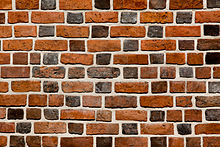Definition and Types of Bricks
– Bricks are construction materials used for walls, pavements, and other elements in masonry construction.
– They can be made of clay or other materials and can be joined using mortar, adhesives, or interlocking.
– Bricks are produced in various classes, types, materials, and sizes.
– Lightweight bricks, also known as lightweight blocks, are made from expanded clay aggregate.
– Blocks, similar to bricks, are rectangular building units composed of clay or concrete and are usually larger than bricks.
– Extruded bricks: Made by being forced through an opening in a steel die.
– Soft-mud bricks: Molded with a thicker clay mix for accuracy.
– Calcium-silicate bricks: Made with lime binding the silicate material instead of clay.
– Concrete bricks: Made from dry, small aggregate concrete.
– Compressed earth blocks: Made from slightly moistened local soils compressed with a press.
History of Bricks
– Ancient settlements like Çatalhöyük and Jericho used mudbrick construction.
– Mesopotamia discovered fired brick between 5000 and 4500 BC.
– The South Asian inhabitants of Mehrgarh and the Indus Valley cities also used air-dried mudbrick structures.
– The rise of monumental baked brick architecture occurred in Indus cities, with uniform brick sizes conforming to a 1:2:4 ratio.
– The earliest fired bricks in China appeared around 4400 BC.
– Proper brick construction emerged in China in the third century BC.
– The Romans used bricks for walls, arches, forts, and aqueducts.
– Brick Gothic architecture became popular in Northern Europe during the Early Middle Ages.
Advantages and Durability of Bricks
– Fired bricks are one of the longest-lasting and strongest building materials.
– They are sometimes referred to as artificial stone.
– Bricks provide durability and structural strength to buildings.
– They can withstand high temperatures and are fire-resistant.
– The use of bricks in construction allows for various patterns and bonds in brickwork.
Methods of Manufacture
– Four types of bricks are un-fired, fired, chemically set bricks, and compressed earth blocks.
– Fired bricks are made from clay and shale, which are highly stable and inert materials.
– The shaping methods for fired bricks include molded bricks and dry-pressed bricks.
– Un-fired bricks, also known as mudbricks, are made from a mixture of silt, clay, sand, and other natural materials.
– Mudbricks have a relatively low embodied energy and carbon footprint.
– Calcium-silicate bricks are made with lime binding the silicate material instead of clay.
– Concrete bricks are made from dry, small aggregate concrete.
– Compressed earth blocks are made from slightly moistened local soils compressed with a press.
Historical Development of Brick Architecture
– Brick architecture originated in ancient Mesopotamia and Egypt around 7000 BC.
– The use of bricks spread to other civilizations, including the Indus Valley, China, and the Roman Empire.
– The Romans introduced fired bricks, which were stronger and more durable than sun-dried bricks.
– Medieval Europe saw the rise of Gothic brick architecture in areas lacking indigenous sources of rocks.
– The Brick Renaissance incorporated Renaissance elements into brick building, leading to the development of the Baroque style.
– The Industrial Revolution led to a massive increase in brick production in England.
– Mechanical brick-making machines were invented, increasing production capacity.
– The demand for high-rise buildings led to the use of steel and concrete, limiting brick usage for skyscrapers. Source: https://en.wikipedia.org/wiki/Brick
A brick is a type of construction material used to build walls, pavements and other elements in masonry construction. Properly, the term brick denotes a unit primarily composed of clay, but is now also used informally to denote units made of other materials or other chemically cured construction blocks. Bricks can be joined using mortar, adhesives or by interlocking. Bricks are usually produced at brickworks in numerous classes, types, materials, and sizes which vary with region, and are produced in bulk quantities.
| Brick | |
|---|---|
 A single brick. |


Block is a similar term referring to a rectangular building unit composed of clay or concrete, but is usually larger than a brick. Lightweight bricks (also called lightweight blocks) are made from expanded clay aggregate.
Fired bricks are one of the longest-lasting and strongest building materials, sometimes referred to as artificial stone, and have been used since circa 4000 BC. Air-dried bricks, also known as mudbricks, have a history older than fired bricks, and have an additional ingredient of a mechanical binder such as straw.
Bricks are laid in courses and numerous patterns known as bonds, collectively known as brickwork, and may be laid in various kinds of mortar to hold the bricks together to make a durable structure.
